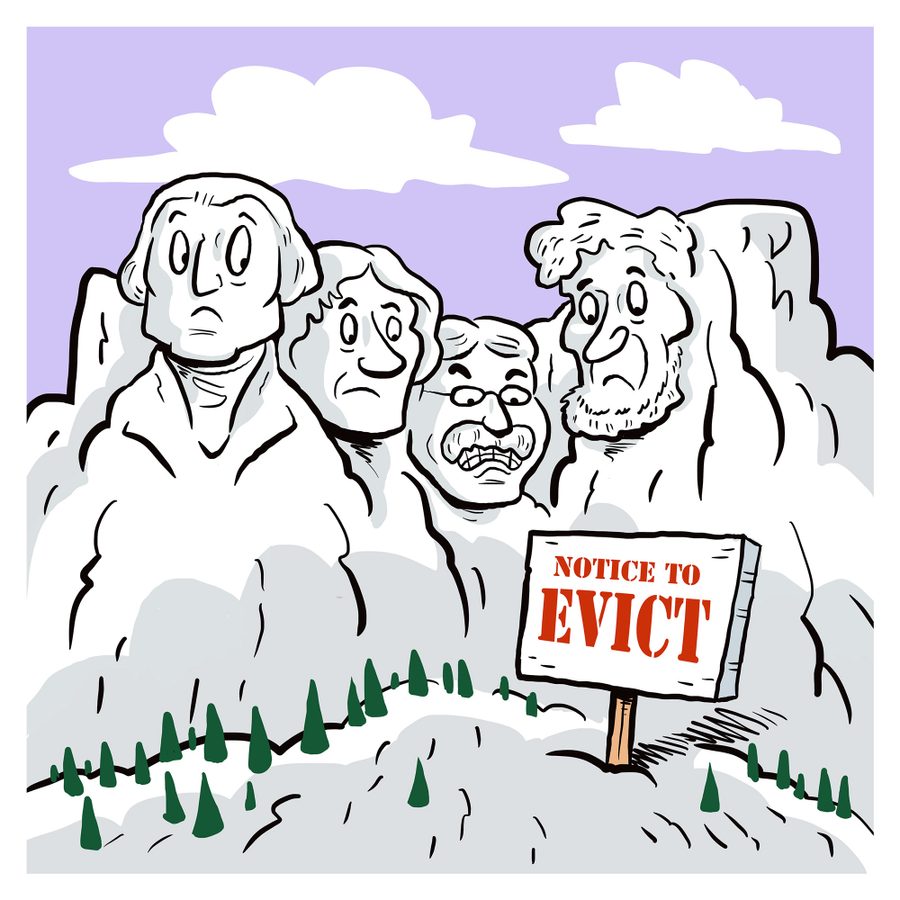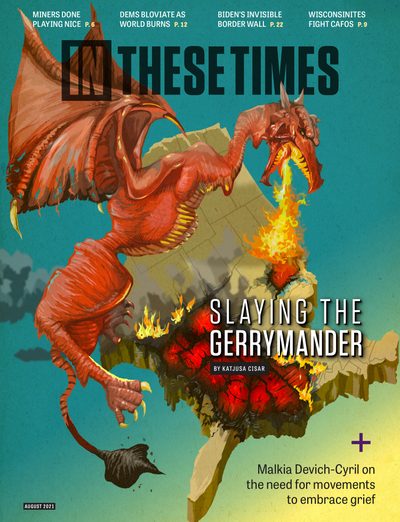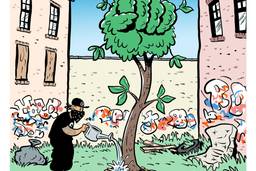The "Landback" Movement Would Return Stolen Land to Indigenous Stewardship
Part of the larger decolonization movement, landback is critical in dismantling white supremacy and mitigating climate disaster.
In These Times Editors

land • back
noun
1. The ongoing movement to return land to the stewardship of Indigenous peoples.
What is the goal of the landback movement?
Beyond its explicit demand, landback is about transforming settler-colonial relationships to land; restoring the language, culture and sovereignty of tribal communities; and dismantling white supremacy. Landback is part of a larger movement toward decolonization and liberation and has existed in various forms in North America for centuries.
The landback movement has inspired a growing call for the Black Hills in South Dakota to be returned to the Oceti Sakowin (Sioux). The area became a flash point in July 2020, when 20 Indigenous land defenders were arrested while protesting a campaign rally for President Donald Trump at Mount Rushmore. Three months later, NDN Collective, an Indigenous nonprofit, launched a campaign to close Mount Rushmore, an “international symbol of white supremacy,” and to return all public lands in the Black Hills to Indigenous groups.
The campaign is not the first of its kind: In the early 1970s, members of the American Indian Movement occupied Mount Rushmore to demand the return of the Black Hills. The Supreme Court ruled in 1980 that the U.S. government had illegally seized the land from the Oceti Sakowin, in violation of the Fort Laramie Treaty of 1868, and ordered the government to pay restitution. The tribes have refused to accept the money and continue to hold out for the return of the land itself.
What are the next steps?
In The Atlantic’s May cover story, Ojibwe writer David Treuer proposed that a consortium of tribal governments run the United States’ national parks. Landback can also mean advocating for affordable housing for Indigenous people in urban areas, fighting for clean air and water, and defunding the police, border patrol and ICE.
Are there precedents?
Yes! In the Pacific Northwest, a years-long campaign by the Yurok Tribe is seeing progress in the removal of dams along the Klamath River. In California, about 1,200 acres in Big Sur were returned to the Esselen Tribe in 2020.
What about climate justice?
The Intergovernmental Panel on Climate Change, a United Nations group, has recognized the value of Indigenous knowledge in adapting to climate change. Land defenders emphasize that land stewardship by Indigenous communities would directly challenge fossil fuel capitalism.
This is part of “The Big Idea,” a monthly series offering brief introductions to progressive theories, policies, tools and strategies that can help us envision a world beyond capitalism. For recent coverage related to this Big Idea, see This Indigenous Peoples’ Day, We Don’t Need Celebration. We Need Our Land Back and A New Native-Led Strategy for Fighting Keystone XL.








